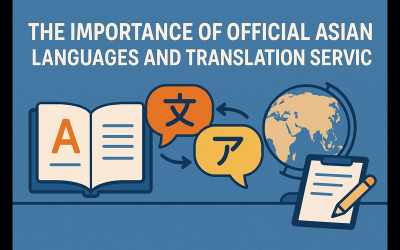Have you ever experienced having to buy something from an online website and trying to connect with so-called live agents whose sentences are fully automated? Or even worse, was that website, a foreign one, automatically translated every sentence written in such a manner that you doubt your own mother tongue? Well, I unfortunately have, and this is how I know chatbot localization is critical as much as website localization for websites to stand.
Communicating via Chatbots
In many globally active websites that provide help via chatbot, there is a communication problem. The owners of such websites are determined that people all over the world can have only certain problems, and those problems can be directly translated to other languages. There is a surprise though: Human factor. There is no way to predict the way a person would ask a question; thus, chatbot language translation is a no go.
Such websites claim that they can serve you in multiple languages with their multi-language chatbot. Let’s have a look at those. First, you are asked to choose a language to communicate with the agent. Expecting an agent that is native or native-like in the language you have chosen, you start typing a question that would make perfect sense in your own language. So, why does the answer provided by the agent tell something entirely different? And why is that answer grammatically or logically nonsense? This is the indicator of lacking chatbot localization. This is the very reason why many people quit using some websites. Such interactions create unnatural conversations where no participants can make use of. When this is the case, as owners that want global expansion, what should we be careful about? What is this chatbot localization?
Chatbot Localization
To describe chatbot localization, first we should know about chatbots. They have been a part of our online experience for such a long time now that we may have forgotten the roots. Chatbot is a computer program that is designed to simulate human interaction with human participants using a natural language. Even with one language, there were times such chatbots struggled. Then more languages were added and chatbot translation became the buzz. But chatbot translator idea stopped working after a while. Programmers realized that what those multi-language chatbots use were not natural language. So they started chatbot language training where they developed AI and taught more languages that are applicable in more contexts. In time, they got smarter. At some points, they were argued to be indistinguishable from actual human beings.
For example, do you remember when Apple first introduced Siri? It was impossible to get her to do what you wanted exactly. There were many miscommunication issues, especially if English was your second language. Siri was unhelpful if you needed a local experience or have a conversation in your own language. Afterwards, Siri was improved and taught languages with their appropriate contexts. Many simulations were created to expose Siri to different environments and conversations in a language other than English. Then, Amazon sped it all with Alexa. Alexa was able to do anything you commanded her to do.
Then Google Assistant took over our houses. With Smart Device applications, every item in your household started to talk back to you. But it only made sense because such famous examples were successfully localized. Can you imagine having to be informed about White House crises every hour of every day when you had to deal with the effects of Brexit in Europe? Well, chatbot localization made sure that you get the news regarding Brexit if you are in Europe first, and then tell you all about White House drama.
Localizing Chatbots
We now know that in order to be successful in a foreign market, you need to speak their language. Not in terms of grammar or structure, but in terms of culture and experiences. When you are trying this hard-to-set up “glocal” advertisement system; having a chatbot that produces unnatural language would take a few steps back. In order to avoid such regression, be a master in chatbot language training. Chatbots create language that may muse or reduce your client list; so you need to be careful. Regardless, don’t be afraid to humanize your chatbot. Chatbot localization shall be provided by experienced translation service providers with the required expertise.
Bonus Example: Still not sure about chatbots and chatbot localization? You can now have a chatbot boyfriend who will help you be flirty and less awkward in dates. With Invisible Boyfriend, you can choose the appearance, personality, age and a back story; then start texting. You can have inside jokes that are characteristics of your own town. What a time to be alive!
Certified Translation Services
Get your documents translated and certified by a professional translator in 120+ languages with 24 hour delivery.
Get a Quote Rana Maalouf
Rana Maalouf

